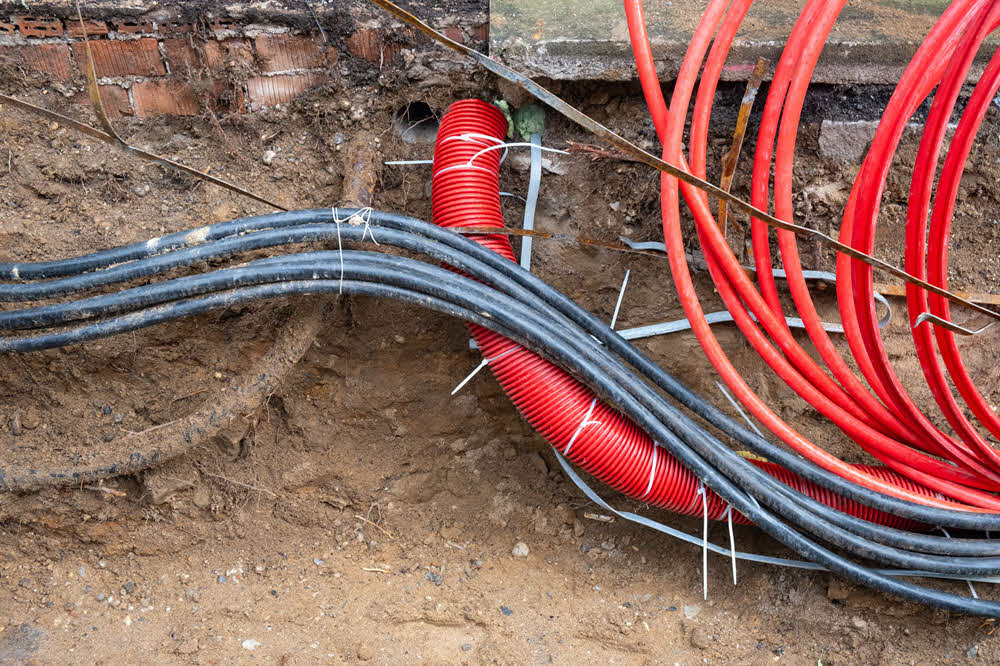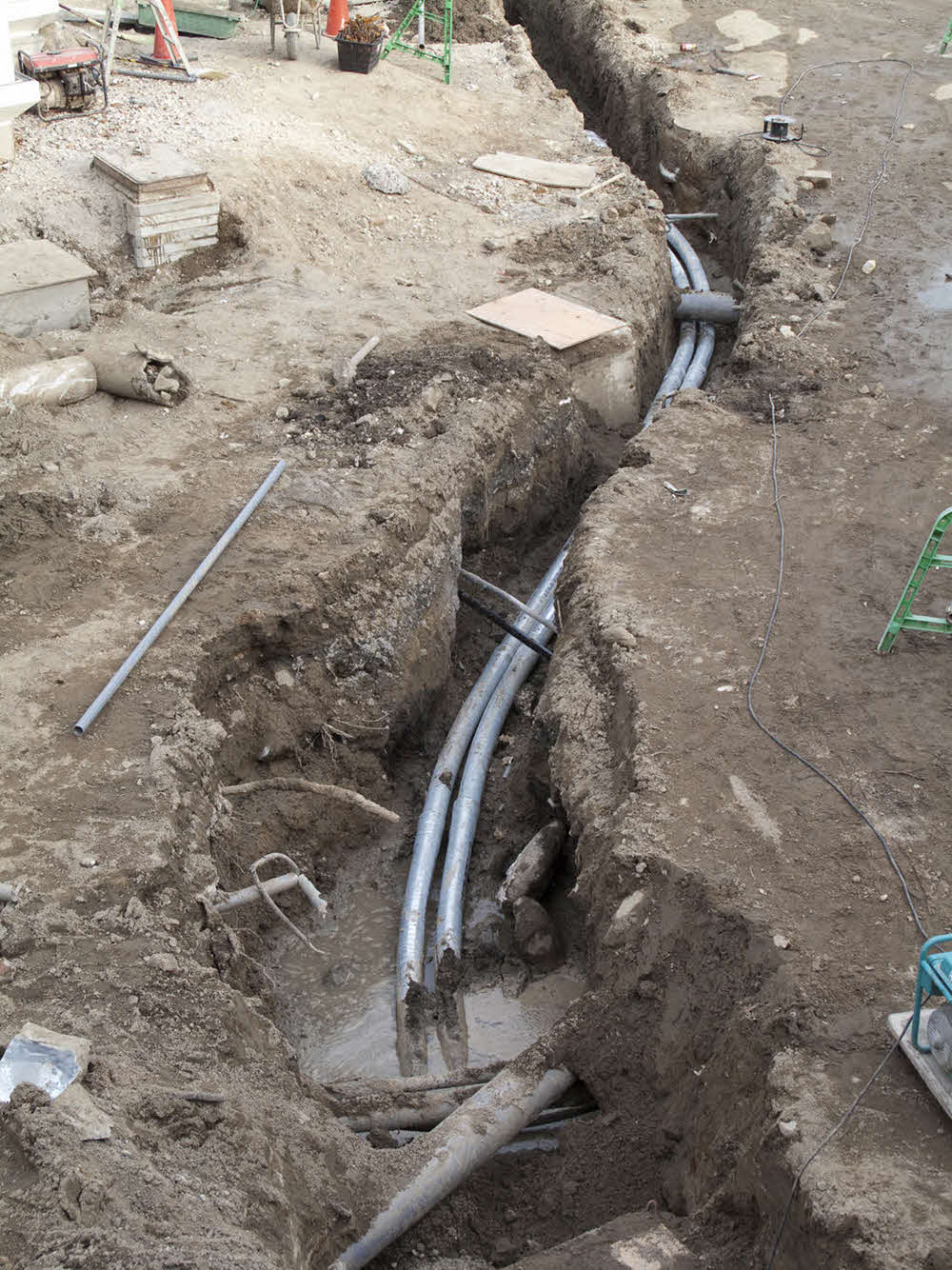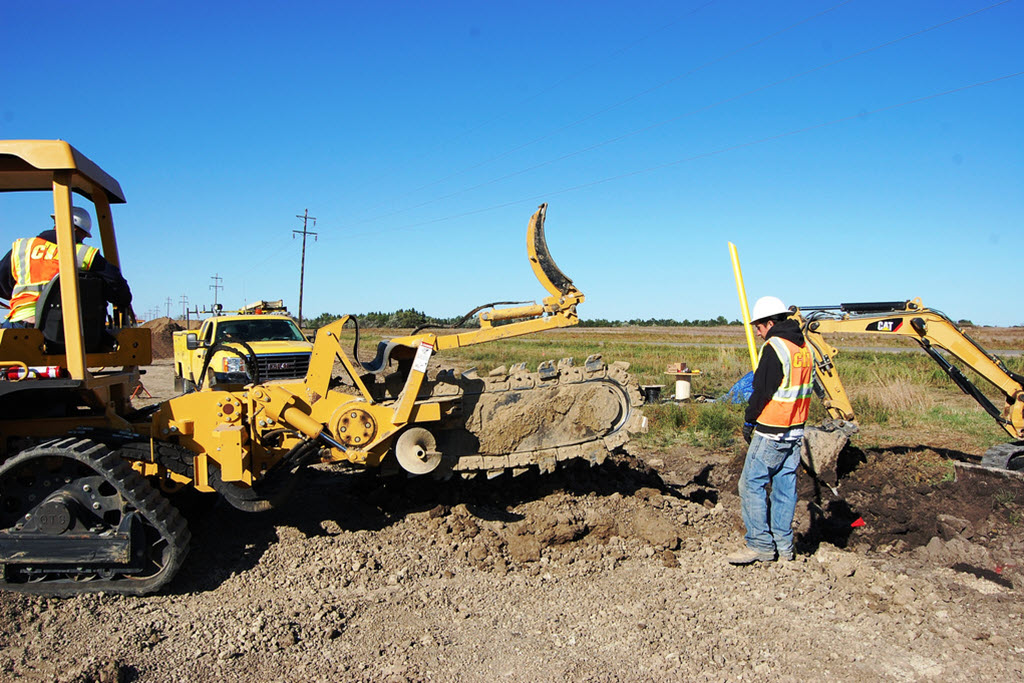Electrical Conduit Servicesin Romeo MI
Expert Conduit Installation to Support Electrical and Data Systems
We Are Locally Owned & Operated For Over 37 Years
Contact Us Today!
We Serve Businesses In And Around The Following Cities:
About Electrical Conduit Services
Introduction
Nestled within the friendly confines of Romeo lies a booming commercial sector, supported by a reliable network of Conduit For Electrical Underground systems. This essential foundation ensures that businesses can operate without interruption, supplied with a steady feed of electricity essential for their operations. By understanding this critical infrastructure from installation to real-world applications, property owners can harness its full potential and reinforce the resilience of their establishments.
The Crucial Role of Conduit For Electrical Underground
Commercial properties, bustling with various operations, often consume copious amounts of electricity. Having a reliable and safe mechanism for electrical supply is of paramount importance. Conduit for Electrical Underground fulfills this need with the promise of longevity and reduced vulnerability to environmental damage, setting a lifeline for businesses in Romeo.
Facilitating this is one of Romeo’s seasoned players in such services, D&J Contracting. They provide tailored underground conduit installation services suiting the unique needs of each commercial estate, considering factors such as site-specific terrain and potential hazards while installing PVC conduit underground.
Understanding the Process: From Trenching to Installation
Whether it pertains to constructing a new building, or upgrading an existing facility, the process of underground conduit installation has several stages. It begins with trenching for electrical conduit, digging out pathways that will house the conduits carrying the electric wires. In Romeo, quality work ensured by firms like D&J Contracting guarantees minimal disruption to the surrounding landscape during the trench electrical line procedure.
Fitting the trench comes next, wherein conduit, often made from robust, corrosion-resistant PVC, is laid. Herein, installing PVC conduit underground requires acute preciseness to avoid accidental mishaps like running electrical wire near gas lines. The conduit is subsequently covered, protecting the now under-earth, running electrical service from external harm and ensuring uninterrupted, safe electricity supply to the commercial facility.
The Benefits of Conduit For Electrical Underground
Worthwhile to note is the spectrum of benefits associated with using Conduit For Electrical Underground. Principal among these is safety; businesses can run an underground electric line with assurance that it’s shielded from accidental physical damage, harmful environmental exposure, and interference from external electric fields. PVC conduit for underground wiring also offers a distinct advantage of longevity, owing to its resistance to corrosion and damage from earth-bound material.
Additionally, in a picturesque locality like Romeo, underground cable lines retain the aesthetic appeal of the cityscape. Businesses running wire in conduit underground not only ensure safety but also contribute to the preservation of the town’s visual character.
Real-World Applications and Success Stories
The commercial sector in Romeo showcases bustling stories of underground electrical conduit’s success. From office spaces to warehouses to local retail outlets, the success of Conduit For Electrical Underground system can be seen across the city. Each running underground power to house their operations, these businesses enjoy uninterrupted electricity supply, bolstered by the security and resilience of an underground network.
One such example is a local manufacturer that relied on D&J Contracting for underground electrical service. By trenching for underground electric the intelligent way, the contracting firm ensured the conduit accommodated the company’s high energy usage without compromising the site’s integrity, eventually enhancing their day-to-day operations.
Considering Conduit For Electrical Underground for Your Business
If you are a commercial property owner in Romeo contemplating an upgrade to your electrical system, the advantages of a Conduit For Electrical Underground are evidently clear. More than maintaining the aesthetic appeal of your establishment, this move will provide a robust and safe electrical system. And when such needs arise, don’t forget to consider experts in the field like D&J Contracting.
Final Reflections
Underground electrical conduits are an integral part of Romeo’s commercial landscape. Financially sound and aesthetically pleasing, this system is a guaranteed way to ensure the smooth operation of your business. By partnering with seasoned specialists like D&J Contracting, you can assure the service quality, from trenching for electrical conduit to running underground power to your premises. Make the switch today and step into a future where your establishment operates on an uninterruptible and safe power supply, right under the feet of the great city of Romeo.
Electrical Conduit Services Gallery


Call Us Today to receive your Free Quote for
Conduit For Electrical Underground in Romeo
Serving: Romeo, Michigan

About Romeo, Michigan
A settlement here was originally occupied by the indigenous Chippewa (Ojibwe), an Algonquian-speaking people who were part of a large language family of tribes extending to the Atlantic Coast. Those tribes around the Great Lakes are thought to have migrated to this area by the 12th century.
The early European-American settlers in this area referred to the Chippewa settlement as “Indian Village”. In the 1820s and 1830s more migrant European-American families began to settle in the area, building homes and establishing businesses. They renamed the community “Hoxie’s Settlement”, after a man who opened an inn on Main Street. In 1839, Hoxie’s Settlement became incorporated and was renamed as the village of Romeo. The name was suggested by the wife of local merchant Nathaniel Taylor because it was “short, musical, classical and uncommon.” Romeo celebrated its 175th anniversary on March 9, 2013.
Romeo once served as a trading center for the timber industry, and had many mills processing lumber from the region. Many wealthy timber families resided there. Dozens of stately Victorian mansions survive. Romeo is distinct in the area for having a fairly robust, traditional downtown, which has never suffered a major fire. Because of this, some stores and restaurants downtown have features such as original tin ceilings from the Civil War. In the early 20th century, Romeo was the site of an early business devoted to the new automobile industry: the Detroit Auto Vehicle Company operated here from 1904 until 1908.
The village is in northwestern Macomb County, situated at the southeast corner of Bruce Township, with a portion extending south into Washington Township. Armada Township is adjacent to the east and Ray Township to the southeast. M-53 passes through the east side of the village, leading north 16 miles (26 km) to Imlay City and south 30 miles (48 km) to the eastern side of Detroit.
According to the United States Census Bureau, the village of Romeo has a total area of 2.05 square miles (5.31 km), of which 0.002 square miles (0.005 km), or 0.10%, are water. East Pond Creek crosses the easternmost part of the village, flowing east to the North Branch of the Clinton River, part of the Lake St. Clair watershed.
| Census | Pop. | Note | %± |
|---|---|---|---|
| 1850 | 330 | — | |
| 1880 | 1,629 | — | |
| 1890 | 1,637 | 0.5% | |
| 1900 | 1,580 | −3.5% | |
| 1910 | 1,787 | 13.1% | |
| 1920 | 2,102 | 17.6% | |
| 1930 | 2,283 | 8.6% | |
| 1940 | 2,627 | 15.1% | |
| 1950 | 2,985 | 13.6% | |
| 1960 | 3,327 | 11.5% | |
| 1970 | 4,012 | 20.6% | |
| 1980 | 3,509 | −12.5% | |
| 1990 | 3,520 | 0.3% | |
| 2000 | 3,721 | 5.7% | |
| 2010 | 3,596 | −3.4% | |
| 2020 | 3,767 | 4.8% | |
| U.S. Decennial Census | |||
As of the census of 2010, there were 3,596 people, 1,501 households, and 979 families residing in the village. The population density was 1,780.2 inhabitants per square mile (687.3/km). There were 1,659 housing units at an average density of 821.3 per square mile (317.1/km). The racial makeup of the village was 91.9% White, 3.8% African American, 0.2% Native American, 0.5% Asian, 1.1% from other races, and 2.6% from two or more races. Hispanic or Latino people of any race were 5.7% of the population.
There were 1,501 households, of which 32.2% had children under the age of 18 living with them, 46.2% were married couples living together, 14.9% had a female householder with no husband present, 4.1% had a male householder with no wife present, and 34.8% were non-families. 30.8% of all households were made up of individuals, and 13.6% had someone living alone who was 65 years of age or older. The average household size was 2.36 and the average family size was 2.96.
The median age in the village was 40.9 years. 23.5% of residents were under the age of 18; 7.7% were between the ages of 18 and 24; 24.1% were from 25 to 44; 29.4% were from 45 to 64; and 15.3% were 65 years of age or older. The gender makeup of the village was 46.4% male and 53.6% female.
As of the census of 2000, there were 3,721 people, 1,528 households, and 993 families residing in the village. The population density was 1,842.8 inhabitants per square mile (711.5/km). There were 1,605 housing units at an average density of 794.9 per square mile (306.9/km). The racial makeup of the village was 92.66% White, 4.35% African American, 0.16% Native American, 0.40% Asian, 0.11% Pacific Islander, 0.67% from other races, and 1.64% from two or more races. Hispanic or Latino people of any race were 2.74% of the population.
There were 1,528 households, out of which 33.3% had children under the age of 18 living with them, 48.2% were married couples living together, 13.5% had a female householder with no husband present, and 35.0% were non-families. 31.3% of all households were made up of individuals, and 13.2% had someone living alone who was 65 years of age or older. The average household size was 2.40 and the average family size was 3.04.
In the village, the population was spread out, with 26.1% under the age of 18, 8.2% from 18 to 24, 30.1% from 25 to 44, 21.4% from 45 to 64, and 14.2% who were 65 years of age or older. The median age was 36 years. For every 100 females, there were 87.2 males. For every 100 females age 18 and over, there were 82.5 males.
The median income for a household in the village was $48,015, and the median income for a family was $60,179. Males had a median income of $51,875 versus $27,696 for females. The per capita income for the village was $22,588. About 3.2% of families and 3.9% of the population were below the poverty line, including 6.5% of those under age 18 and 3.9% of those age 65 or over.
The government of the village of Romeo consists of elected and appointed officials. The elected officials include six council members, one president, treasurer and clerk. The appointed officials include the Chief of Police, Department of Public Works Director, and Village Administrator. Currently, the elected clerk also holds the appointed position of Village Administrator. The day-to-day operations of the village are handled by the Clerk/Administrator.
Since the turn of the 21st century, Romeo has worked to upgrade its infrastructure. It has improved the streetscape on Van Dyke Avenue, the main road through the village, and installed a new water tower. It had earlier established one of the few wastewater treatment plants in the region. While most of the metropolitan region receives water and sewage service from the City of Detroit, Romeo independently sustains its own supply of water and manages treatment of village sewage. This was especially valuable during the blackout that occurred throughout the entire northeastern United States on August 14, 2003. Romeo was one of the few areas in the Detroit metropolitan area to have clean running water. More recent infrastructure improvements include a complete renovation of the village water system, and replacement of all the sidewalks throughout the village.
Call Us Today to receive your Free Quote for
Conduit For Electrical Underground in Romeo
Related Services in Romeo, Michigan
We Serve Businesses In The Following Zip Codes:
48007, 48015, 48021, 48026, 48035, 48036, 48038, 48042, 48043, 48044, 48045, 48046, 48047, 48048, 48050, 48051, 48066, 48071, 48080, 48081, 48082, 48083, 48084, 48085, 48088, 48089, 48090, 48091, 48092, 48093, 48098, 48099, 48225, 48230, 48236, 48310, 48311, 48312, 48313, 48314, 48315, 48316, 48317, 48318, 48397